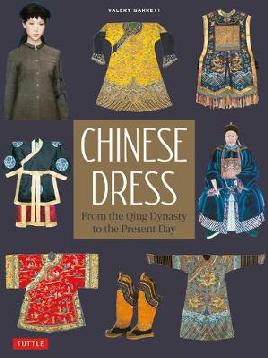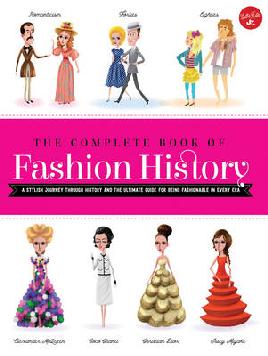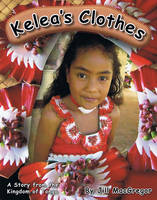To celebrate Diversity Awareness Month this year, we decided to craft a paper doll which you can customize and dress up with different costumes from all over the world. Of course the list is not finished and we have missed many beautiful cultures, but we have to start somewhere and we hope you enjoy dressing your dolls as much as we did.
Today we'll focus on the traditional dress of people from China.
The Art of Hanfu
In human history, clothing is not only used to keep the body warm but also serves as an element of reflecting a society's culture. Hanfu 汉服 is such a cultural artefact evolving in through Chinese history. The term Hanfu is adapted from its Chinese pronunciation. According to the Dictionary of Chinese Clothes, Garments, and Apparel, Hanfu can refer to Han costumes in the service system of the Liao Dynasty (907-1125 CE), the costumes worn by people during the Han Dynasty (202 BCE - 220CE), and the historical styles of clothing worn by people with the Han ethnic background in China. This multi-facet definition suggests that Hanfu has a special position in Chinese culture and tradition.
Hanfu basics
As a special clothing style, Hanfu is composed of three layers, namely underwear, middle clothes, and overcoats. It is characterised by the right gusset of the cross collar, the large placket, the wide-clothing belt, and the hidden buckle of the belt. The right-left intersected front of the clothes conceals the right gusset covered inward and appears as a "y" shape. The right gusset feature distinguishes the clothing style of the Han people living mainly in the central plains of China from those of ethnic minority groups.
In ancient times, the types of Hanfu were different based on the social status of the wearer and its function in an occasion. For example, the emperor usually wore a yellow robe with dragon patterns. In a wedding, the bride's dress type was determined by the social status of the groom. The type of mourning clothes were chosen based on the length of the mourning period. Both the fabric and the colour of the clothes held symbolic meaning. The clothes made from brocade and silk symbolised the rich. The fabric was coloured with natural dyes and embodied the Chinese belief in Yin and Yang and the Five Elements although each dynasty had its favoured colours.
In addition to clothing, Hanfu usually goes with accessories such as headwear, footwear, belts, and jade pendants. Both the decorated belt and the jade pendant show the wearer's identity and social status. The crown cap is an element of officials' court dress and demonstrates the rule of etiquette. Women's hair buns were combed into various styles and decorated with beautiful ornaments. Women's shoes are usually embroidered.
Hanfu in the past and today
Hanfu has a recorded history of more than three thousand years. The earliest record of Hanfu can trace back to the Yellow Emperor, a legendary Chinese sovereign. It reads "Yao and Shun of the Yellow Emperor hang down his clothes and rule the world." “黄帝尧舜垂衣裳而天下治”. Since then, Hanfu has evolved based on beliefs, religions, and rules throughout Chinese history. The essentials of Hanfu are passed on from generation to generation, whereas the clothing style of Hanfu changes from dynasty to dynasty. Each dynasty has detailed regulations on the colours and styles allowed by each level of aristocrats and commoners.
Hanfu has not only changed along with the dynamic of dynasties but also with the cross-cultural exchange. An example of foreign influence on Hanfu is the change of women's clothing in the Tang Dynasty (618-907 CE). Ruled with Confucian doctrines, ancient Chinese women usually dressed in closely wrapped and concealing outfits. Women's dress in the Tang Dynasty was, however, influenced by the cultures of India, Turkistan, Persia, and Greece and became more relaxed and revealing with a low-cut neckline. In turn, Japan's kimono and Korea's hanbok are examples of Hanfu's influences on the clothing styles of other cultures.
Nowadays, Hanfu is no longer the daily clothing of Han people in China but we can still see the costume in ceremonies and exhibitions. It becomes part of performing art events. Cosplay with Hanfu is popular among young Chinese people. With the global migration of Chinese people, the new trends in addressing Hanfu also spread to other countries. In New Zealand, Hanfu groups spring up and their performance in local events has drawn great attention from the public.
Download, print and colour in your own paper dolls wearing Hanfu using the templates below!
Books on Chinese clothing in the library
If you are interested in Chinese costumes, you will get inspired by the English and Chinese titles listed below.
- Chinese Dress
- Imperial Chinese Robes
- Feng wu ni shang
- Chuan yue shi kong kan wen ming
- More on Chinese clothing and dress
Web resources on traditional Chinese clothing and Hanfu
- Hanfu Festival: Oriented to the Traditional Costume Community
- Ancient costumes exhibition
- Hanfu practice in New Zealand
For kids: Books about traditional dress in different cultures
Try some of these books to explore the diverse world of clothing.



















Add a comment to: Diversity Awareness Month paper doll craft: China